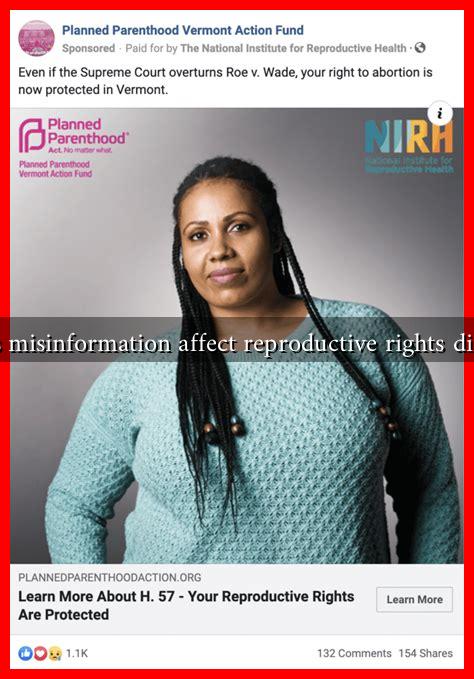-
Table of Contents
How Does Misinformation Affect Reproductive Rights Discussions?
In recent years, the discourse surrounding reproductive rights has become increasingly polarized, with misinformation playing a significant role in shaping public opinion and policy. The spread of false or misleading information can distort the realities of reproductive health, leading to confusion, stigma, and ultimately, detrimental impacts on individuals seeking care. This article explores how misinformation affects discussions on reproductive rights, highlighting its implications, examples, and potential solutions.
The Nature of Misinformation in Reproductive Rights
Misinformation can take many forms, including myths, half-truths, and outright falsehoods. In the context of reproductive rights, this misinformation often revolves around topics such as abortion, contraception, and sexually transmitted infections (STIs). The sources of misinformation can be diverse, including:
- Social media platforms
- Political rhetoric
- Misleading advertisements
- Unreliable websites and blogs
These sources can amplify false narratives, making it challenging for individuals to discern fact from fiction. For instance, a common myth is that abortion leads to severe mental health issues, a claim that has been debunked by numerous studies, including a comprehensive report by the American Psychological Association.
Impact on Public Perception and Policy
The consequences of misinformation extend beyond individual beliefs; they can significantly influence public policy and legislation. When misinformation permeates public discourse, it can lead to:
- Increased stigma surrounding reproductive health services
- Legislative actions based on false premises
- Public fear and misunderstanding of reproductive health
For example, in the United States, the spread of misinformation about the safety of abortion has contributed to the enactment of restrictive laws in several states. According to the Guttmacher Institute, as of 2021, 19 states had enacted laws that severely limit access to abortion services, often justified by unfounded claims about the procedure’s risks.
Case Studies: Misinformation in Action
Several case studies illustrate the profound impact of misinformation on reproductive rights discussions:
- The “Abortion Reversal” Myth: The claim that a medication abortion can be “reversed” has gained traction despite a lack of scientific support. This misinformation has led to legislative efforts in some states to mandate that women be informed of this supposed option, further complicating the decision-making process for those seeking abortions.
- Contraceptive Myths: Misunderstandings about contraceptive methods, such as the belief that hormonal birth control causes infertility, can deter individuals from using effective methods. This misinformation can lead to unintended pregnancies and increased rates of STIs.
The Role of Education and Advocacy
Addressing misinformation requires a multifaceted approach that includes education, advocacy, and the promotion of accurate information. Here are some strategies that can help combat misinformation:
- Comprehensive Sex Education: Implementing evidence-based sex education programs in schools can equip young people with accurate information about reproductive health.
- Public Awareness Campaigns: Organizations like Planned Parenthood and the Guttmacher Institute work to dispel myths and provide factual information through various media channels.
- Engagement with Healthcare Providers: Training healthcare providers to communicate effectively about reproductive health can help ensure that patients receive accurate information.
Conclusion
Misinformation poses a significant challenge to reproductive rights discussions, influencing public perception and policy in ways that can undermine access to essential health services. By understanding the nature of misinformation and its impacts, stakeholders can work towards more informed discussions and policies that respect individuals’ rights to make decisions about their reproductive health. Education, advocacy, and the promotion of accurate information are crucial in combating misinformation and fostering a more informed public discourse. As we move forward, it is imperative to prioritize truth and transparency in reproductive rights discussions to ensure that all individuals can make informed choices about their bodies and health.
For more information on reproductive rights and to access reliable resources, visit Planned Parenthood or Guttmacher Institute.

